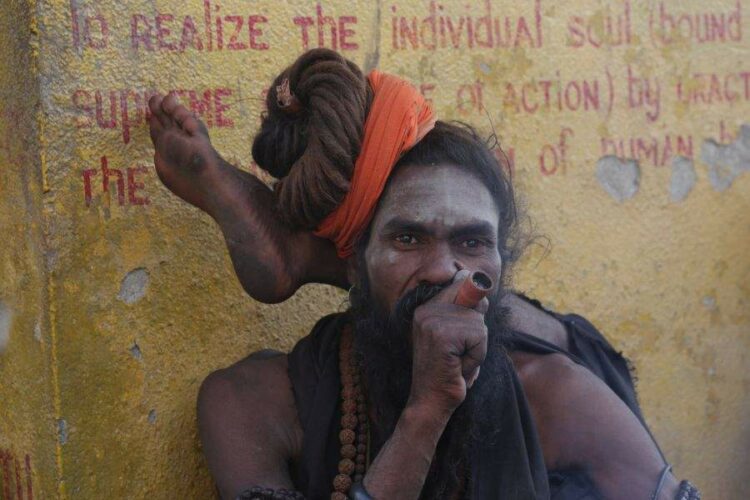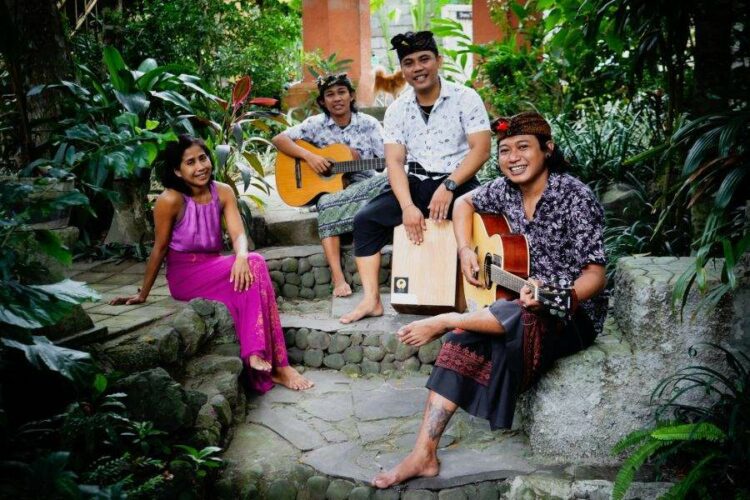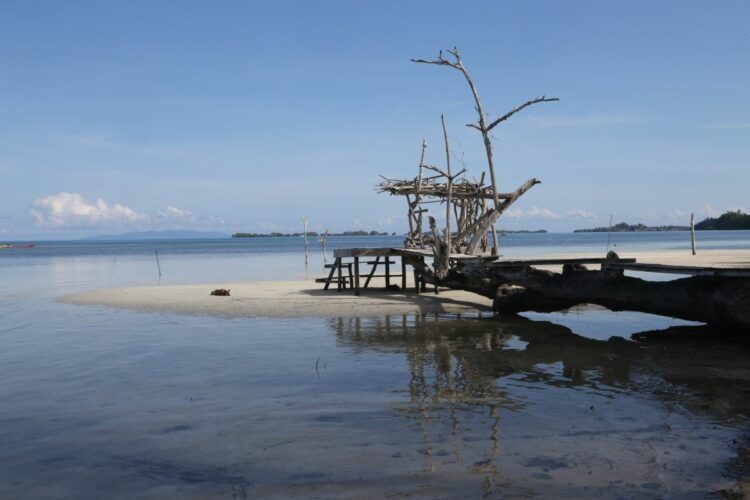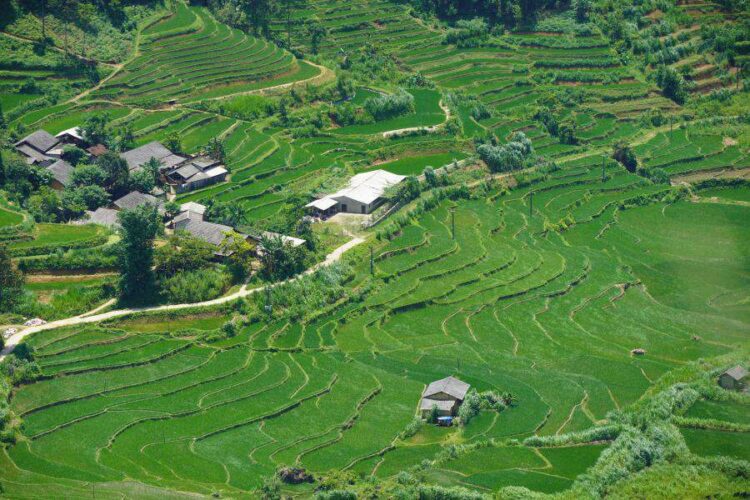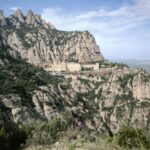What Does Maha Shivaratri Mean?
The Night of Shiva is a large festival that is celebrated every year at the Pashupatinath Temple in Kathmandu, Nepal, among other places. It takes place annually on the 14th day of the month of Phalguma (February or March) in the Gregorian calendar. Although there is a Shivaratri every month, the great Maha Shivaratri takes place only once a year. Hundreds of thousands of devotees, mainly sadhus from northern India and all over Nepal, make the pilgrimage to the Pashupatinath temple to celebrate the night of Shiva. It is the highest holiday for the devotees of Shiva and the holiest of all nights. His statues are doused with milk and honey, flowers, rice and fruit are offered as sacrifices, and people smoke pot. The whole festival is a huge spectacle and one of the most intense experiences we had on our travels. But more about that later.


Who is Shiva, anyway?
Shiva means “the benevolent one” and is one of the three greatest deities in Hinduism, along with Brahman and Vishnu. While Brahman is the creator, Vishnu the one who sustains the universe, Shiva is given the role of destruction in the Hindu trinity. Destruction in the sense of impermanence – everything created has to give way to make room for something new. Therefore, Shiva has a certain dual role that makes him special. Destruction makes him appear terrible and malevolent, whereas new creation portrays him as good and benevolent. With his wife Parvati, Shiva has two sons, Subrahmanya and Ganesha. There are umpteen different names and representations of Shiva, mostly he is depicted with a blue face and larynx, trident, the bull Nandi as a mount and meditating on a tiger skin with the snake Ganga around his neck (the goddess of the holy river Ganges).
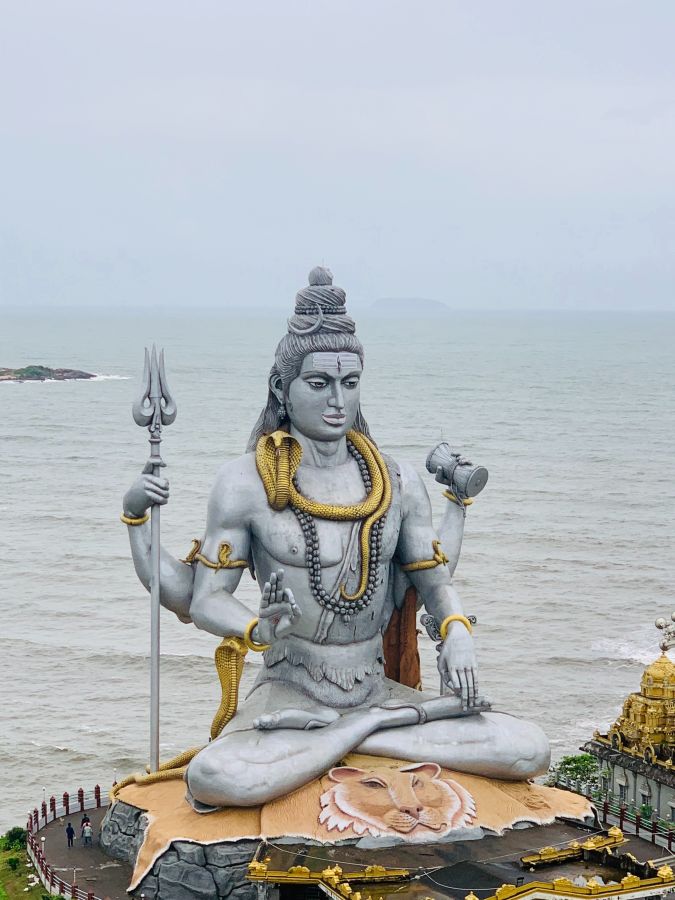

What happens on Maha Shivaratri?
1 Getting there
In the morning, we set off by bus to the Pashupatinat temple. First of all, the crowds were overwhelming and a bit daunting. In the end, the festival takes place on 3 levels. Outside the temple grounds, inside the temple grounds and inside the Pashupatinath temple. Since visitors are not allowed to enter the inside of the temple, our declared goal was to at least get into the temple grounds. Luckily, we were travelling with our buddy Prashant, who knew a trick or two. After crossing the foul-smelling holy river, climbing fences, passing grass-selling children and pushing our way past crowds of people, we came out at a back entrance. The passageway was so small that the crowds pushing through were almost overwhelming and police with bamboo sticks kept order. We never thought it possible, but after a few minutes we were actually inside and didn’t have to pay a cent to enter.

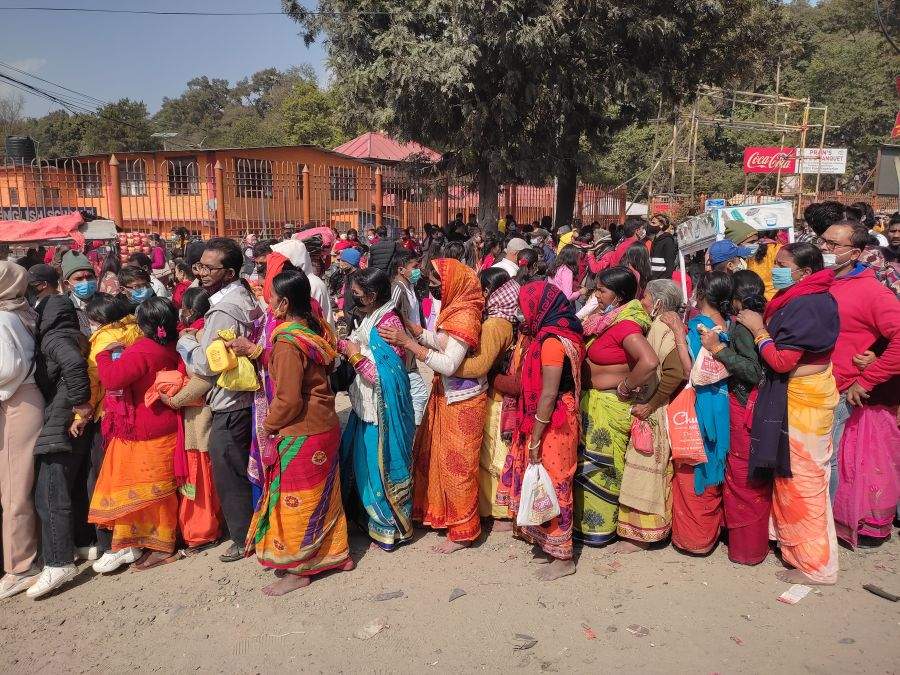
Colourful queue outside the temple grounds 
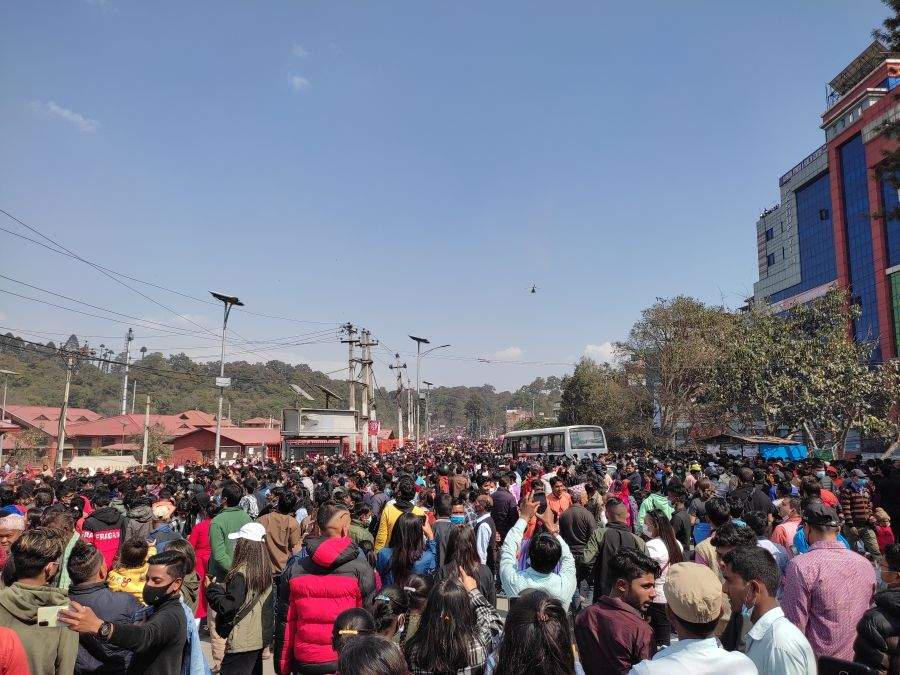
Crowds on the way to the festival
2 Afternoon
The temple was unrecognisable, crowds of people everywhere and sadhus sitting on the edge smoking pot and meditating. The sadhus are happy to be photographed in the temple, but expect a small donation in return. Some sadhus are also almost uncovered, but are not really allowed to do so anymore due to an order. Further inside the temple there was a small techno rave, which was always interrupted by loud Shiva chants. We were told that this was organised by a Hindu youth organisation. For us, however, the most bizarre thing was the funeral rituals that also took place during the festival. Techno rave and funeral virtually on the same site. The dead are let down to the water at the holy river that flows through the temple, so that they touch the holy water with their feet before they are cremated. Often the corpses are uncovered again for everyone to see.


Sadu meditating 
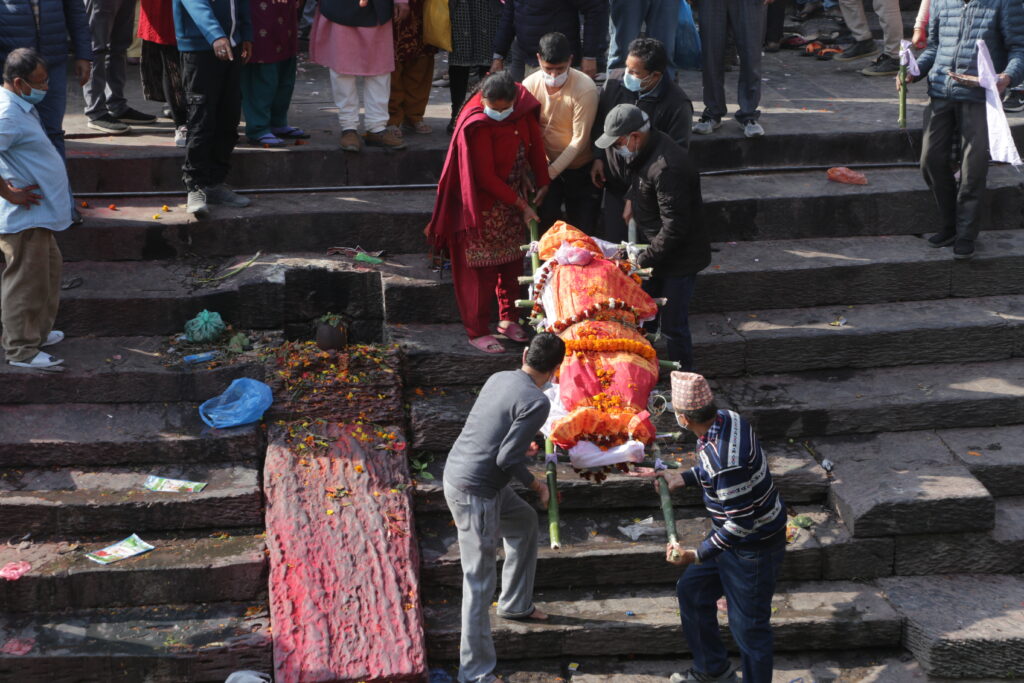
Burial at Pashupatinath Temple
3 Evening prayer
The main part takes place in the evening – the evening prayer. Here, all the people gather on the stands around the holy river. There is dancing, smoking and praying. Some people even dance themselves into a trance. Various dance and singing groups perform while the dead continue to be buried next door. Free food is also served to all visitors. After the prayer, the devotees stay there to celebrate Shiva’s night. For us, the day was over after thousands of impressions, some of them somewhat disturbing.


Performance of a believer during evening prayer 
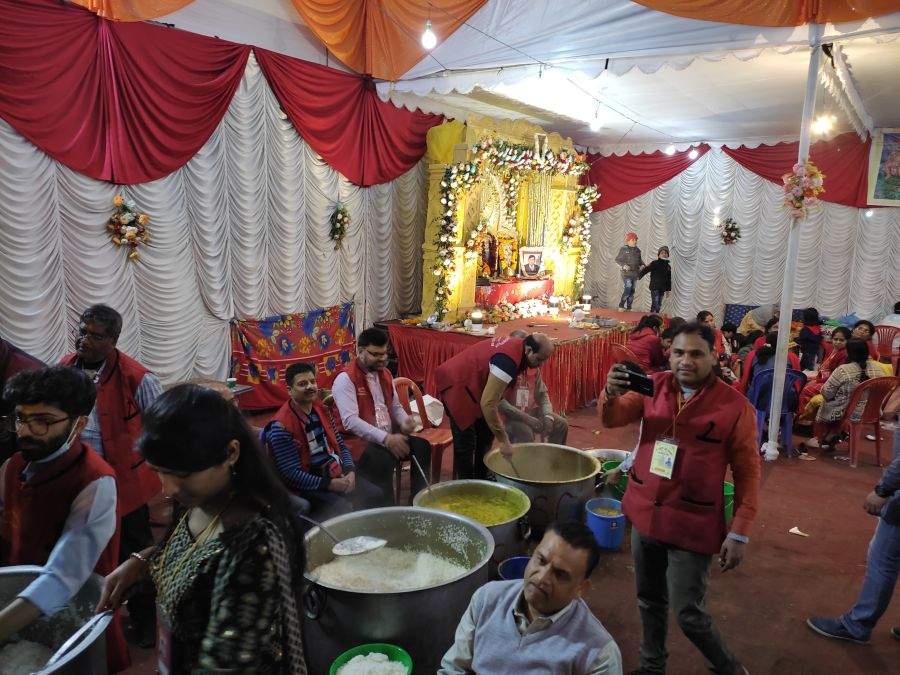
Free food for all (note the sizes of the containers)
Who exactly celebrates Shivaratri?
Sadhus – Hindu mendicant monks – are the main people found at Shivaratri. They often wear only a loincloth, live in asceticism and have no fixed abode or other property. They have renounced everything worldly in order to avoid rebirth. They are usually devotees of Shiva and in search of enlightenment. They often wear orange robes, dreadlocks and are often seen meditating.


Sadhu in the temple 
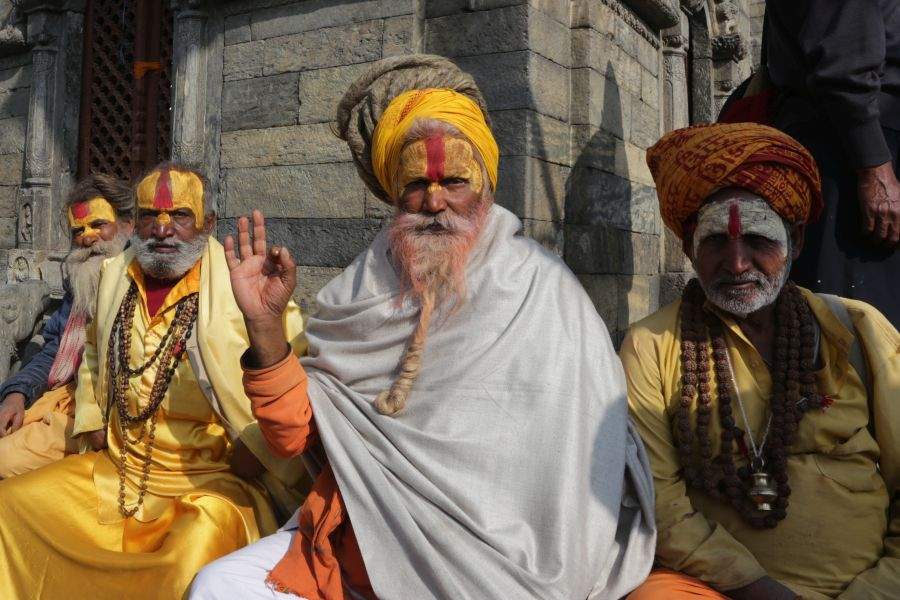
Sadhus meditating
Smoking weed on Shivaratri
Smoking pot is prohibited in Nepal, except on Shivaratri, when it is allowed for religious sadhus who see cannabis use as part of their meditation practice on the path to enlightenment.
Other festivals in Nepal
Another great festival in Nepal is the Holi Festival. It even takes place every year at a similar time as Maha Shivaratri. You can find out everything you need to know about it in our special article.



